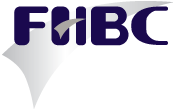 Historical cost is the amount of cash or cash equivalents paid to acquire an asset or the amount of cash expected to be paid to settle an obligation in the normal course of business. The historical cost principle provides reliability because everyone can agree on an initial purchase price of an asset. However, the historical cost does not necessarily provide relevant information.
Historical cost is the amount of cash or cash equivalents paid to acquire an asset or the amount of cash expected to be paid to settle an obligation in the normal course of business. The historical cost principle provides reliability because everyone can agree on an initial purchase price of an asset. However, the historical cost does not necessarily provide relevant information.
Fair value on the other hand is the amount for which an asset could be exchanged, or a liability settled between knowledgeable and willing parties in an arm’s length transaction. The fair value principle is usually relevant but not necessarily reliable because the valuation techniques may be subject to estimation.
The development and application of fair value reporting is not a 21st century concept. In fact, fair value reporting dates all the way back to the French and German accounting regulations from 1673 to 1914. Although historical cost seemed to dominate the European accounting regulations, fair value measurement was highly recommended by the legal community from 1800. Fast forward to 2005 and the European Union adoption of IFRSs: The application of forward-looking valuations approaches under the assumption that certain valuations are more truthfully based on the ability of an asset to generate future cash flows.
Fair value is not an entity specific value, but rather a market-based value on which market participants would agree upon on a measurement date. Thus, where the fair value is not observable, an entity will use valuation techniques.
The standard (IFRS 13) refers to three valuation techniques, i.e., the market approach, the cost approach, and the income approach:
- Market approach is where the ‘exit price’ can be determined with reference to an observable market (for example: a listed stock exchange). This approach would be considered a level 1 input.
- The cost approach is where an assets’ carrying value is compared to a similar replacement value of an identical asset in the market, sometimes referred to as the net-replacement value. The cost approach would be considered a level 2 input.
- The income approach discounts estimated future cash flows and will be considered a level 3 input.
To publish more reliable and useful information to the users of financial statements, the entity should maximise the use of observable inputs and minimise the use of unobservable inputs.
Entities and those charged with governance are therefore confronted by a dynamic situation where obsolescence of assets becomes evident and profit opportunities appear or vanishes which leads to revaluation of assets.
Another consideration is the necessity to change valuation techniques which will result in more representative information going forward. These changes shall be accounted for as a change in estimate in accordance with IAS 8.
Conclusion:
The purpose of the entity’s financial statements is to present relevant, reliable, and comparative information to the users thereof. Many underlying elements must be considered before assets and liabilities are remeasured which raises the question: Who thought that the modern-day accountant’s job is monotonous?
An accountant is “someone who solves a problem you didn’t know you had in a way you don’t understand”.
If you have any enquiries, please contact Reghardt Barnard at reghardt@fhbc.co.za
Source Reference:
MEUNIER K., 2012, Historical cost and fair value accounting, disponibil on line: http://business-accounting-guides.com/historical cost/ http://cluteinstitute.com/ojs/index.php /RBIS/article/view/7579/7645%20%20f
GEORGIOU, O. & JACK, L. 2011. In pursuit of legitimacy: A history behind fair value accounting. The British Accounting Review. Vol 43, pp 311 – 323.
INTERNATIONAL FINANCIAL REPORTING STANDARDS (IFRS) FOUNDATION. 2011. IFRS 13: Fair value measurement.
INTERNATIONAL FINANCIAL REPORTING STANDARDS FOR SMALL AND MEDIUM-SIZED ENTITIES (SMEs) 2015 Amendments to the IFRS for SMEs

